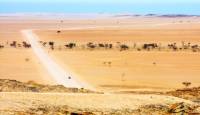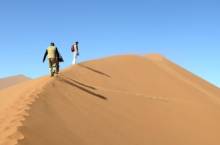A desolate but fascinating area, Namibia’s hauntingly beautiful Skeleton Coast extends from the banks of the Orange River towards Walvis Bay, bordering one of the harshest environments in the world, the Namib Desert. This 40km wide and 500km long coastal stretch of land in north-western Namibia is where the cold Benguela current of the Atlantic Ocean crashes up against the dunes and desert landscape of the Namib. Named after the hundreds of whales who lost their lives on this section of coast due to whaling, bleached whale bones still litter the shoreline today if not being used by the native Ovahimba people to build their huts.
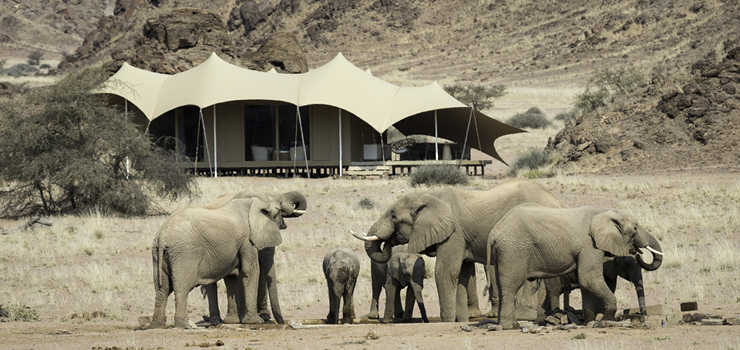
The Skeleton Coast National Park outlines the entire Namibian coastline and moves across the Kunene River and 200km into Angola. The thick fog, strong currents and rough seas so prevalent to this region has left many ships and sailing boats stranded. The rusty remains of these shipwrecks and whale bones, together with dense mist and flat beaches create moody yet striking visuals for those who journey to this no-man’s land.
Despite being an incredibly hostile environment with windswept dunes and extensive mountain ranges, the Skeleton Coast is home to one of the largest breeding colonies of Cape fur seals. The seals are drawn to the area by the vast amount of fish found swimming in the nutrient-rich waters provided by the Benguela Current. Visitors have the opportunity to witness these captivating creatures from extensive walkways that trail the breadth of the colony, picking up interesting details through their interactions with one another.
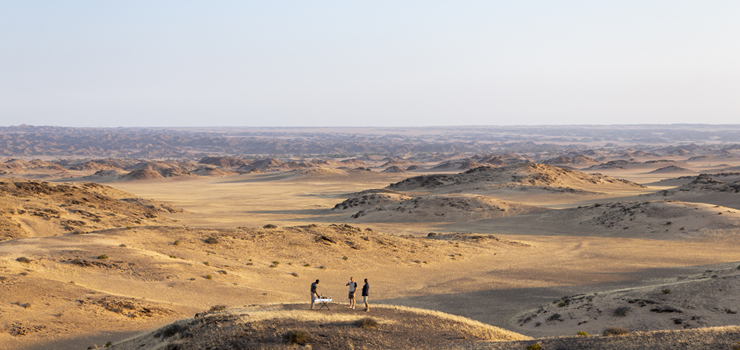
The Park’s river courses sustain a large amount of additional wildlife including Black rhino, desert elephant, oryx, lion and brown hyenas. Endemic reptiles such as the Nile soft-shelled turtle and armour-plated lizard can also be found lurking around the dunes or across the region’s level coastline. The wealth of diverse flora along the Skeleton Coast is another surprising phenomenon to many. Plants such as nara melons, lichen, pencil (ink) bush and welwitschias have adapted well to the arid environment utilizing the fog that comes off of the Atlantic as their form of hydration.
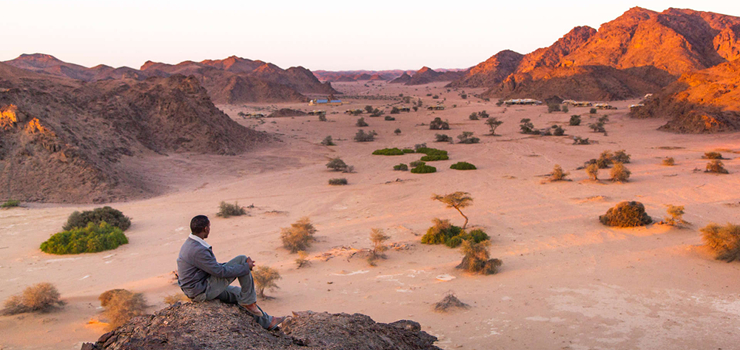
The best way to experience the rich variety of plant and animal life on this coastline is from scenic fly-in safaris, thrilling 4 x 4 expeditions across the sand dunes or hiking the famous Ugab River Trail located at the boundary of the Skeleton Coast, near Swakopmund. Fishing excursions and birding trips are also on offer during the wet season as over 247 bird species inhabit the area, namely the near-endemic Damara tern, African swamphen, Namaqua sandgrouse and Pomarine skua.
The Skeleton Coast rarely gets more than 10mm (almost 0.40in) of rain annually. During the summer (October to April) temperatures range from 20°C/68°F to 40°C/ 104°F. Winter (May-September) sees temperatures sit between 0°C/32°F to 23°C/73°F making it a great destination to explore year round. Day visitors are only permitted to visit the Skeleton Coast National Park between sunrise and sunset and permits are available at the two entry gates: Springbokwasser in the east and at the Ugab River in the south.
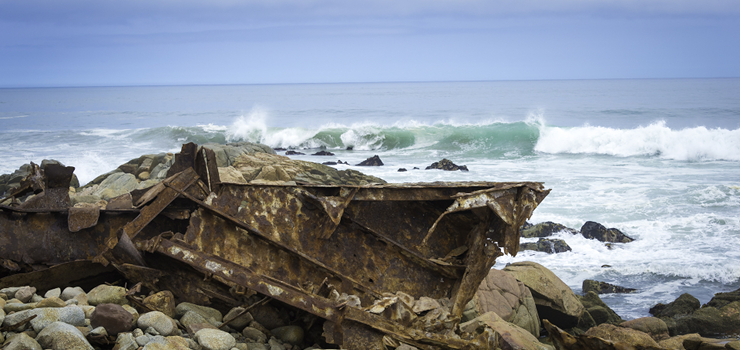
Due to the remoteness of the Skeleton Coast, accommodation is limited to a number of safari lodges and camps, however all provide sense of tranquillity with spectacular views of the surrounding landscape and its flora and fauna.
